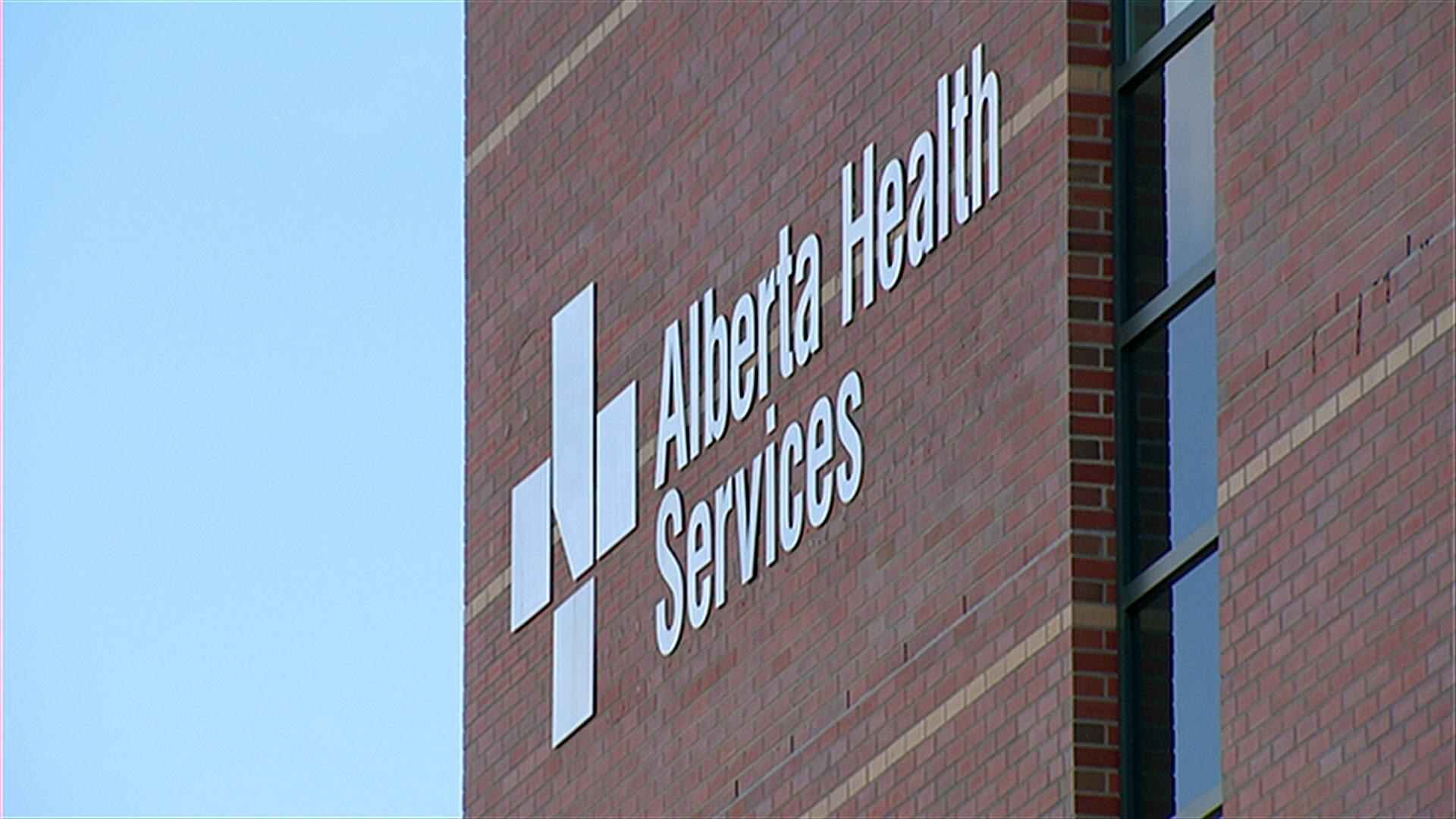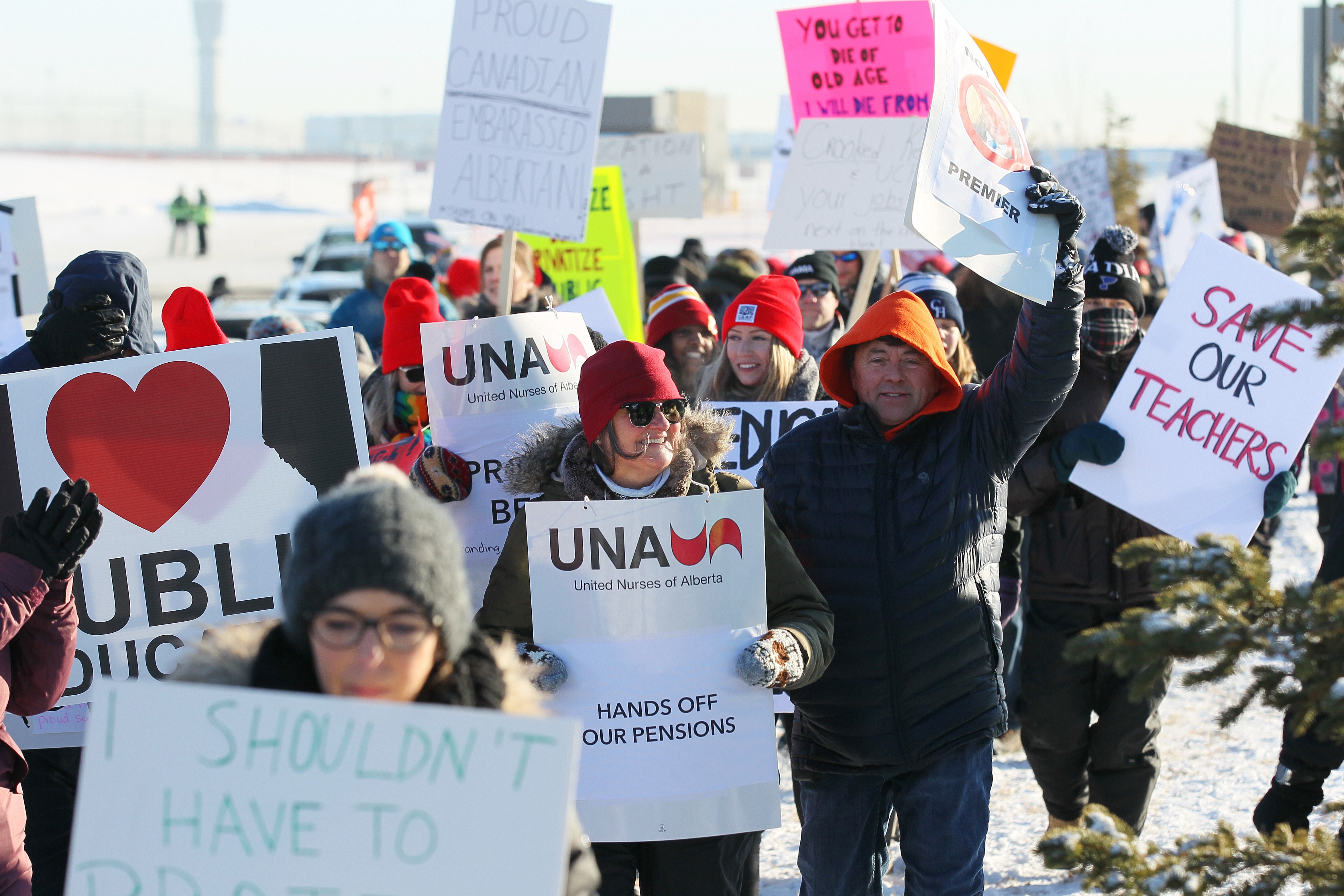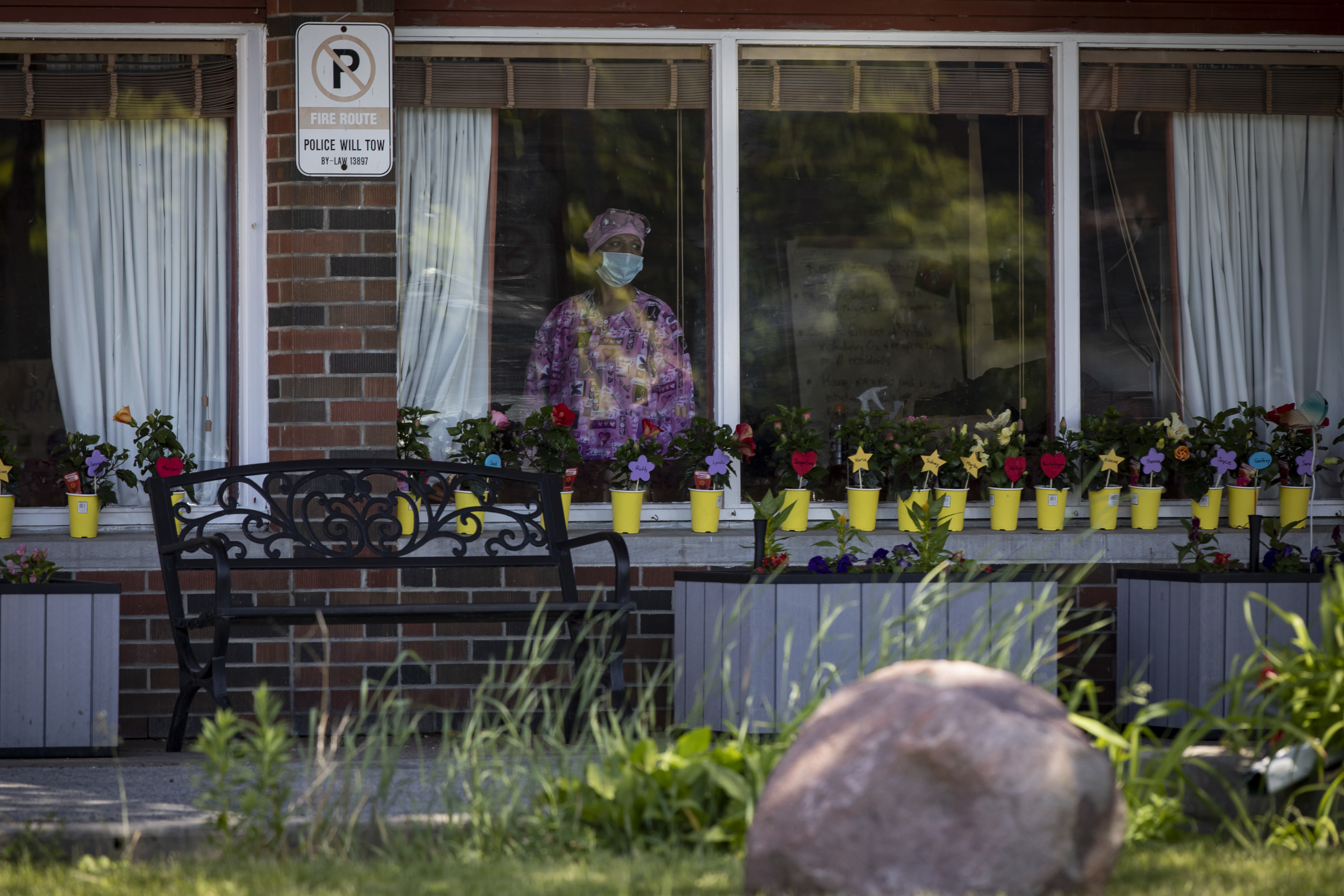October 13, 2020
Alberta Health Services has walked back parts of a plan that will massively restructure the province’s health-care system.
A confidential internal AHS draft plan, dated July 29 and obtained by CBC News, reveals that under direction from Health Minister Tyler Shandro, AHS had proposed a cost-cutting plan that would have resulted in the elimination of as many as 10,300 full-time jobs, affecting up to 16,700 employees, including nurses and other front-line staff.
CBC News reached out to Steve Buick, Shandro’s press secretary, on Thursday with details of the leaked draft report, and Buick promised an interview today with Shandro in which the minister was to provide updated information.
Shandro instead provided an updated version of the plan to the Edmonton Journal, which reports AHS will cut 11,000 jobs, but no layoffs are expected for front-line clinical staff including doctors and nurses, though around 800 jobs will be lost through attrition.
Shandro told the Journal most of the jobs will come from outsourcing general support services like lab services, housekeeping and in-hospital food services. It is expected to save $600 million annually.
The July 29 draft plan obtained by CBC News was calculated to reduce costs by between $837 million and nearly $1.2 billion annually. The health authority's budget is $15.4 billion.
It described an aggressive agenda that would profoundly impact health-care employees and patients. It contained 100 initiatives that would most notably affect:
- Labour: AHS would outsource thousands of general service jobs, axe many nursing and clinical support positions, and remove collective agreement provisions — through legislative change, if necessary — to reduce compensation for nurses. It would also eliminate doctors' clinical stipends and claw back overhead costs.
- Seniors and others receiving continuing or community care: The health authority would increase accommodation fees for continuing care, introduce a co-pay for home care, and shift more patients from subsidized long-term care to designated supportive living.
- Rural communities: AHS would reconfigure and potentially consolidate hospital services, including emergency departments, and shutter underused diagnostic imaging and laboratory sites.
On top of the proposed cuts, AHS was to manage with a flat budget over the next three years, save for any exceptional spending related to the ongoing COVID-19 pandemic and a surgical wait list initiative.
"There is much to accomplish in a short period of time, and an intensity of impact that must be recognized," the AHS draft plan stated.
"The pace and amount of work set out here is not to be understated, with the collection of initiatives truly changing the way health care is delivered in Alberta for years to come." Given the plan's scale and the ongoing COVID pandemic, "there is risk of overwhelming our staff, physicians and partners," AHS acknowledged.
"However, likewise, there is risk to Alberta's financial position should we not aggressively pursue outcomes in a reasonably fast time frame."
Covenant Health, the province's faith-based health-care provider, would implement many of the initiatives in lockstep with AHS. The two health systems also would develop a new agreement to improve co-ordination of services.

Can't 'bludgeon' system into large-scale change: expert
Health-care policy expert Steven Lewis has done consulting work in Alberta and taught at the University of Calgary.
He said many of the plan's proposed initiatives are sensible, well-known changes enacted by health-care systems around the world.
Lewis cited AHS plans to reduce physician and staff costs, eliminate unnecessary tests and surgeries, ensure patients are promptly discharged from intensive care, and avoid hospital admissions if other care settings are more appropriate.
But he said Shandro’s ambitious timeline — roughly three years — and his bellicose public behaviour toward doctors and unions would make it nearly impossible to successfully implement the changes.
“The irony is that the government is right about many of the problems in the system; it just has no clue about change management,” Lewis said in an email to CBC News.
In a later interview, Lewis said, “Historically, it has been very difficult to bludgeon any major group in the system into large-scale change. So if you think you're in a position to win battles that no one has won before, good luck to you.
"You can't make meaningful, positive and durable change in any health-care system without at least the complicity, and, ideally the active engagement and support, of the workforce," he said.
"If you don't assure people job security, why would you expect them to willingly participate enthusiastically in making the changes that may result in the loss of their own jobs?"
Alberta Health Services did not respond to requests for an interview.
In July 2019, the UCP government hired Ernst & Young to find efficiencies in AHS. The consultants' report, released in February, concluded $1.9 billion yearly could be saved. AHS assigned a team to assess the report’s recommendations and to develop a detailed plan for which measures to implement.
The resulting draft plan showed Shandro directed AHS to detail ways it would enact all of the Ernst & Young recommendations, with a few exceptions: He ordered no hospital closures, no merger of Edmonton trauma centres, and no closure of air ambulance bases because their contract is not near expiration.
Shandro has publicly promised that every dollar saved will be reinvested back into the health-care system.
But the minister's hardline position on cuts has created a difficult situation for AHS with doctors and other health-care staff.
Woven throughout the draft plan's discussion of thousands of layoffs are reminders that employees must be treated with respect during the complex reorganization of an already sprawling system.

Thousands of layoffs; jobs outsourced
"Most initiatives will impact our people, with impacts ranging up to and including job loss," the document stated.
"Specific impacts to employees will vary and generally not be known until detailed implementation plans are in place."
Under the plan, AHS would reduce part-time nursing positions, impacting nearly 1,600 nurses. It would eliminate between 1,200 and 1,870 full-time equivalent nursing and clinical support jobs.
Sick leave would be reduced and there would be stricter oversight of overtime pay. AHS would also explore whether to schedule staff on shorter notice based on patient demand.
Linen, in-patient food, and cleaning services would be outsourced, eliminating nearly 4,000 full-time equivalent positions, which would affect more than 7,400 employees.
AHS would claw back overhead costs from doctors, remove clinical stipends, reduce interpretation fees for certain tests, and negotiate a new contract with radiologists. The health authority’s contribution to academic salaries for employees who teach would be frozen.
Future staff shortages could arise.
"The effects of this plan would disproportionately affect younger workers who have less unionized seniority," the document stated.
"This is particularly a concern in the context of an aging workforce and population."
AHS also acknowledged the risk of moving too quickly with labour changes that can't be easily reversed, especially during the ongoing COVID-19 pandemic.

Major health-care labour turmoil anticipated
Compounding the already difficult task of reorganizing a massive organization during a pandemic was the potential for protracted labour turmoil.
"As we have seen in the past, there is the risk of illegal strike activity, particularly related to contracting out," the document stated.
"In addition, we can anticipate labour disputes and unrest, such as information pickets, rallies, labour board complaints and grievance arbitrations."
Still, the health authority signalled it was prepared to take a hard line with unions.
It would remove some United Nurses of Alberta collective agreement provisions, through legislation if necessary, to reduce compensation. That change would be implemented in April 2021 and was estimated to save up to $48 million by March 2022.
"AHS proposals reflect the current economic realities and our goal to have our collective agreements more closely align with comparable provinces," the draft plan said.
"This includes addressing outlier items that only exist in Alberta agreements and bringing other compensation items in line with the Canadian market."
The document said while AHS wanted to limit the impact on the workforce where possible, attrition alone wouldn't achieve the cost-cutting goals the government has set.
"Any limits placed on position elimination, layoff and displacement will impede the ability to make changes and achieve savings in a timely way," the plan stated.
"At this time, AHS is not considering additional mitigation strategies that may assist with minimizing the impact on employees, such as voluntary early retirement programs, due to limited effectiveness and associated costs."
As has been reported previously, Shandro is keen to expand private contracted surgical facilities across the province in an attempt to reduce costs and waiting lists.
Lewis, the health policy expert, said there is no strong evidence that contracting out surgical services saves money, reduces wait lists or improves outcomes.
“Part of it always has been ideological rather than financial,” Lewis said.
“And unless the government can transparently show that there is a real cost saving, the quality will be maintained and clinical appropriateness criteria will be applied, I think it is perfectly reasonable to be skeptical that this is going to solve a financial problem.”

Increased costs for home care, continuing care
There were plans to increase or shift significant costs to the public, most particularly to seniors.
The document said Alberta is one of the few provinces that doesn’t require home-care clients to pay some of the service's cost. AHS was planning to introduce a co-pay for certain services but clients who receive federal or provincial income support would be exempt.
University of Toronto adjunct professor Michael Rachlis, a public health doctor, has worked as a consultant for provincial governments and their health organizations, including in Alberta.
He says home-care co-pays are "really contrary to the spirit of universality and accessibility within our system," and could prove financially counterproductive.
"Even if you try to waive it for low-income people, the people just above that notch are going to decide they have to pay their rent that month; they can't pay for home care," he said.
"And then you know what happens? They end up back in hospital, where the government is going to have to pay anyways."
People in continuing care would also pay more out of pocket. AHS would increase accommodation fees for long-term care and designated supportive living, subsidizing the cost for low-income Albertans.

'It is nickel and diming' the system, says expert
AHS planned to shift some beds from long-term care to designated supportive living to "align service levels to population needs and prevent overserving."
The document failed to mention that, unlike in long-term care, designated supportive living clients and their families must bear the cost of drugs, and medical supplies and equipment.
AHS proposed to hike the rates for optional private and semi-private hospital rooms, and remove a legislated cap on the percentage of these rooms for which it is allowed to charge.
It also would increase the amount it charged patients at all AHS facilities for supplies not covered by the provincial health-care insurance plan, such as crutches and casts, by adding "direct labour costs" and indirect costs such as inventory handling and storage.
"It is nickel and diming," Rachlis said. "I don't know how much this is really going to save compared to what the health system in Alberta really costs.
"It is the wrong focus to start off with controlling costs by charging more money, which is really just offsetting costs."
The health authority would also consider outsourcing some patient transportation. For patients who don't require an ambulance, AHS would encourage families and other community resources to give them a ride.
The plan also discussed allowing corporate advertising on large electronic billboards on AHS property, and on the exterior and interior of facilities, on AHS websites, its mobile app, parking stations and other high-traffic areas.
Another proposal likely to be contentious was the sale of AHS assets including long-term care facilities — particularly given the serious problems with private continuing care facilities exposed by the COVID-19 pandemic. The document stated this initiative has been paused while Alberta Health conducts a review of continuing care programs and services.
“This initiative will need to consider the national dialogue taking place related to continuing care, which may influence the balance of private versus publicly delivered services. The review being conducted by [Alberta Health] will influence government perspective on this initiative in the long term.”

Reconfiguration of some rural services
Many of the proposed initiatives would have the biggest effect on rural communities.
"While each individual initiative may have limited impact on the economic viability of our smaller rural communities, there will be cumulative effects across multiple initiatives," the document stated.
Some of the hardest hit would be rural Albertans employed by AHS. For those working in areas due to be outsourced, such as linen and environmental services, "opportunities for alternate employment within AHS may be limited."
Shandro promised not to close rural hospitals, but the draft plan shows an intent to reconfigure emergency department, acute care and maternity/obstetrics services.
AHS also proposed to close or consolidate "underutilized" diagnostic imaging and laboratory sites.
Lewis, the health policy expert, said Shandro’s decision not to close rural hospitals is a political move meant to avoid alienating rural voters.
He said AHS has already consolidated services in Calgary and Edmonton but there is still an opportunity to save money, without compromising care, by strategically closing some underused rural hospitals.
Instead of having two large rural hospitals within 50 km of each other, he said, there could be hospitals 80 km apart.
“It is probably a more effective way to save money without harming people, especially if you have a good medical transportation system and you take advantage of modern technology, as the pandemic has led to with virtual care.”
In fact, the AHS plan called for an expansion of virtual care based on the service’s success during the pandemic.
Rachlis said it doesn’t make sense to have several hospitals in an area that offer broad services but can’t provide specialized care.
“There is no point in picking up somebody who is having a serious heart attack and then driving to their local hospital 10 km away if that local hospital has no facility to do an angiogram and to do stenting or surgery if that is required,” he said.
He said the government should prioritize providing services now lacking in rural communities, specifically primary health care and community home care — both "lifelines" for aging rural populations.
Rachlis and Lewis both referenced the aggressive cuts, including thousands of layoffs, imposed on Alberta’s health-care system by the government of former premier Ralph Klein. Deep cuts during a provincial recession were followed by years of runaway spending as successive governments attempted to undo the damage to the health-care system.
Rachlis cautioned Shandro not to make the same mistake.
"If the minister actually tries to implement everything in the Ernst & Young report as quickly as possible, there is going to be chaos in the Alberta health system."
